13 Underrated European Spots + 7 That Are Real Hidden Gems
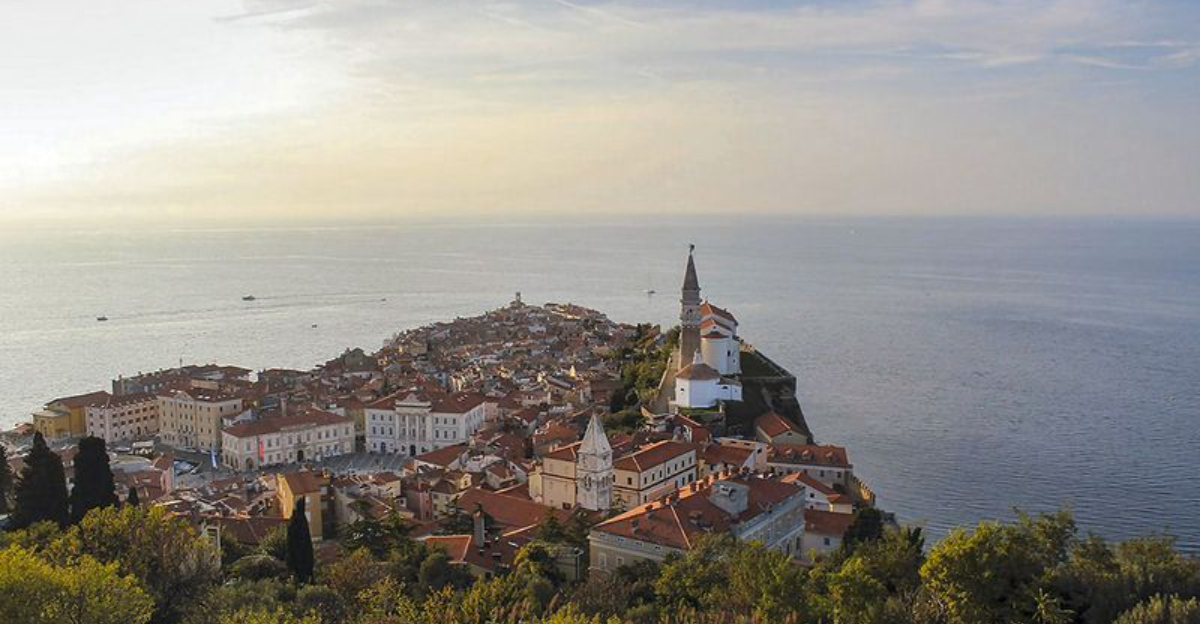
Think you’ve seen all that Europe has to offer? Think again. While iconic cities like Paris and Rome are always worth a visit, there’s a whole other side of Europe waiting just beyond the tourist trail.
I’ve wandered cobblestone streets with no crowds in sight, stumbled upon breathtaking views without a single tour group, and found towns where locals still greet you like a friend. These places aren’t splashed across postcards—but maybe that’s exactly why they feel so magical.
So if you’re craving an adventure that’s a little more personal (and a lot less crowded), these 13 underrated destinations—and 7 extra-hidden gems—might just be what your passport’s been waiting for. Ready to explore Europe’s quieter side?
1. Porto, Portugal

Nestled along the Douro River, Porto captivates visitors with its colorful riverside houses and wine legacy. The city feels refreshingly authentic compared to Lisbon, with fewer tourists crowding its narrow streets.
Port wine cellars line the southern bank in Vila Nova de Gaia, offering tastings and tours that explain the region’s famous fortified wine. Don’t miss the gorgeous Livraria Lello bookstore, which reportedly inspired J.K. Rowling during her time living in Porto.
The food scene here is exceptional and affordable. Try a francesinha sandwich – a hearty meat-filled creation covered in melted cheese and spicy sauce that will keep you full all day!
2. Ljubljana, Slovenia
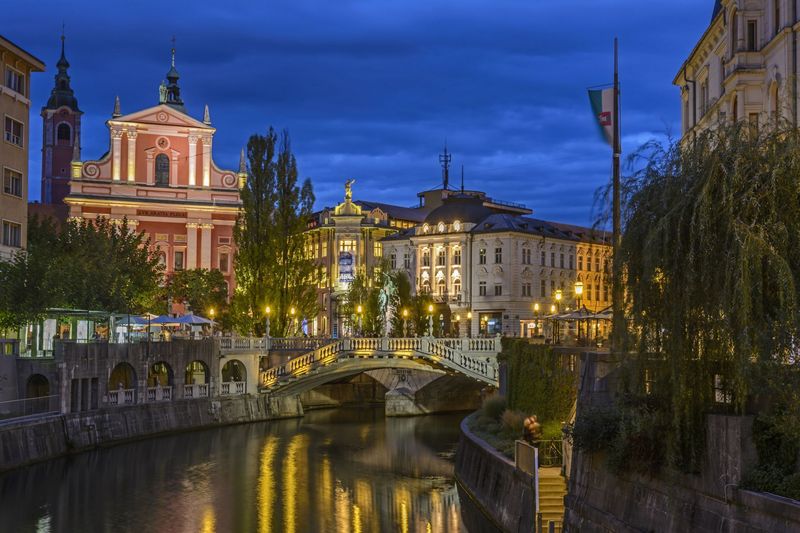
Ljubljana might be Europe’s most charming small capital. Car-free streets wind alongside the emerald Ljubljanica River, creating a relaxed atmosphere where locals and visitors mingle at riverside cafés.
The city blends architectural styles beautifully – from baroque churches to art nouveau mansions and the whimsical designs of local architect Jože Plečnik. Dragons guard the famous bridge in the center, becoming the unofficial mascots of this magical place.
Summer evenings here are magical when the riverbanks transform into one long outdoor party. Food stalls, musicians, and locals enjoying wine create a festival-like atmosphere without the planning or price tag of an actual festival.
3. Ghent, Belgium

While tourists crowd Bruges, Ghent offers similar medieval charm with a livelier, less touristy feel. The city center features three stunning towers – Saint Bavo’s Cathedral, the Belfry, and Saint Nicholas’ Church – creating an unforgettable skyline.
Ghent’s canals reflect centuries-old guild houses and the impressive Gravensteen Castle, a medieval fortress right in the city center. This university town has a youthful energy that balances its historical setting perfectly.
The food scene deserves special attention. Local specialties include waterzooi (creamy chicken stew), cuberdons (cone-shaped purple candies), and of course, excellent Belgian beers brewed right in the city.
4. Kotor, Montenegro

Kotor’s setting is simply breathtaking – a medieval walled town nestled at the end of Europe’s southernmost fjord, surrounded by towering mountains. The Bay of Kotor creates a natural harbor that once made this a powerful maritime center.
Climbing the city walls rewards you with increasingly spectacular views. The fortifications zigzag up the mountainside to St. John’s Fortress, offering the perfect panorama of terracotta roofs and the deep blue bay below.
Wander through the maze-like old town where Venetian palaces, Orthodox churches, and Catholic cathedrals reveal the region’s complex history. Cats roam everywhere – they’re the unofficial mascots of Kotor and even have their own museum!
5. Bratislava, Slovakia

It’s easy to fall for Bratislava’s cozy historic center, where pastel buildings and humorous sculptures like the “Man at Work” give the city a lighthearted personality.
Slovak cuisine deserves more recognition! Hearty dishes like bryndzové halušky (potato dumplings with sheep cheese) pair perfectly with local beers and wines. The city’s coffee culture thrives in charming cafés tucked into medieval buildings.
Bratislava Castle watches over everything from its hilltop perch, offering views into Austria and Hungary on clear days. This accessibility to multiple countries makes it an excellent base for exploring Central Europe without the crowds or prices of Vienna or Budapest.
6. Mostar, Bosnia and Herzegovina
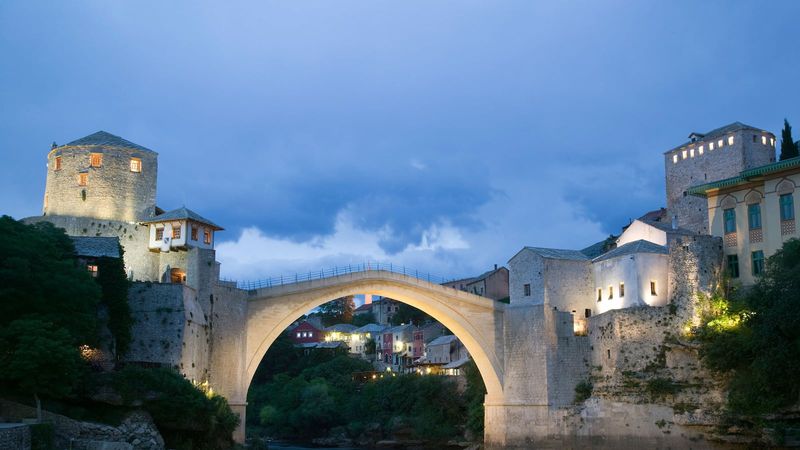
The graceful arc of Mostar’s Stari Most captures the eye instantly — and the long-standing tradition of locals diving from it adds an adrenaline-fueled twist to its beauty.
The old town feels like stepping back in time with its Ottoman-era architecture, stone streets, and traditional crafts. Copper workshops produce beautiful handmade souvenirs, while riverside restaurants serve exceptional Bosnian cuisine.
History weighs heavily here; bullet holes and ruins from the 1990s war stand alongside restored buildings. This contrast creates a powerful reminder of Mostar’s recent past while showcasing the remarkable resilience of its people.
7. Gjirokastër, Albania (hidden gem)
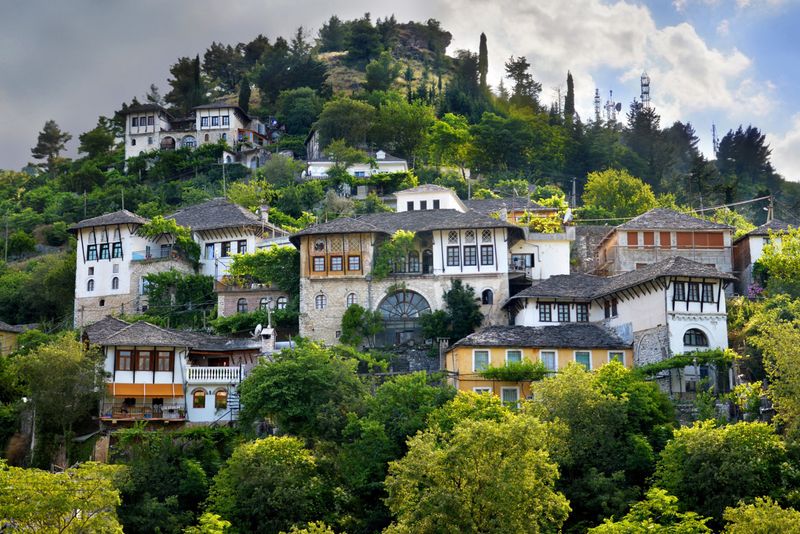
Gjirokastër looks like something from a fairytale with its fortress crowning the hill and Ottoman-era stone houses cascading down the slopes. These distinctive homes feature slate roofs, wooden balconies, and tall chimneys creating a magical atmosphere that earned UNESCO protection.
The massive castle offers breathtaking views and houses an impressive arms museum featuring everything from Italian WWII aircraft to communist-era tunnels. Writer Ismail Kadare was born here, and his house museum provides insight into traditional Albanian family life.
Local cuisine deserves special attention! Try qifqi (rice balls with herbs) or pashaqofte (liver meatballs) in family-run restaurants. Dining on a terrace overlooking the valley while the call to prayer echoes from minarets creates an unforgettable sensory experience.
8. Valletta, Malta

Built as a fortress city in the 16th century, Valletta stuns with its compact layout and UNESCO-listed baroque buildings that have stood the test of time.
Honey-colored limestone buildings glow golden in the Mediterranean sunlight. The city sits on a peninsula with grand harbors on both sides, creating dramatic views from its many gardens and fortifications. St. John’s Co-Cathedral might look plain outside, but inside it’s an explosion of baroque splendor.
Maltese cuisine reflects the island’s position between Europe and North Africa. Try pastizzi (savory pastries) from street vendors or rabbit stew in traditional restaurants while enjoying the perfect year-round climate.
9. Giethoorn, Netherlands (hidden gem)
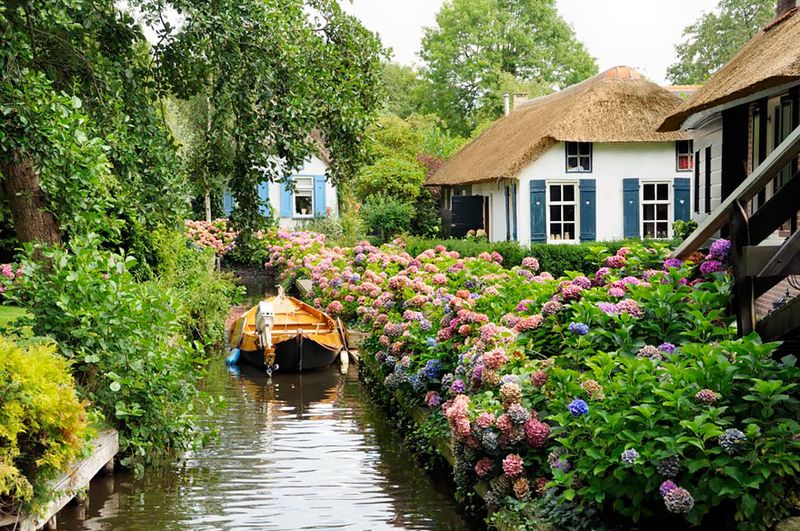
Navigating Giethoorn feels like stepping into another world, where waterways connect quaint homes, arched bridges, and serene gardens instead of streets.
Rent a silent electric boat to explore at your own pace. Gliding past 18th and 19th-century homes while ducks paddle alongside creates a sense of peaceful timelessness rare in modern Europe. The surrounding De Wieden nature reserve offers excellent hiking and bird-watching opportunities.
Despite being just an hour from Amsterdam, Giethoorn maintains its tranquil atmosphere if you stay overnight. When day-trippers leave, residents reclaim their canals, and you can experience the magic of sunset reflecting on still waters.
10. Lviv, Ukraine

Lviv feels like a living museum where Eastern and Western European influences create something uniquely Ukrainian. The UNESCO-listed old town showcases architectural styles from Gothic to Baroque to Art Nouveau, miraculously preserved through centuries of changing empires.
Coffee culture thrives here – legend claims the first European coffeehouse opened in Lviv. Today, themed cafés serve specialty brews in settings ranging from medieval cellars to quirky workshops. The Lviv Opera House stands as one of Europe’s most beautiful theaters, hosting world-class performances at surprisingly affordable prices.
Markets overflow with traditional crafts, while restaurants serve Galician specialties like borscht and varenyky (dumplings). Despite recent challenges, Lviv’s spirit remains unbroken, making it an inspiring destination.
11. Piran, Slovenia (hidden gem)
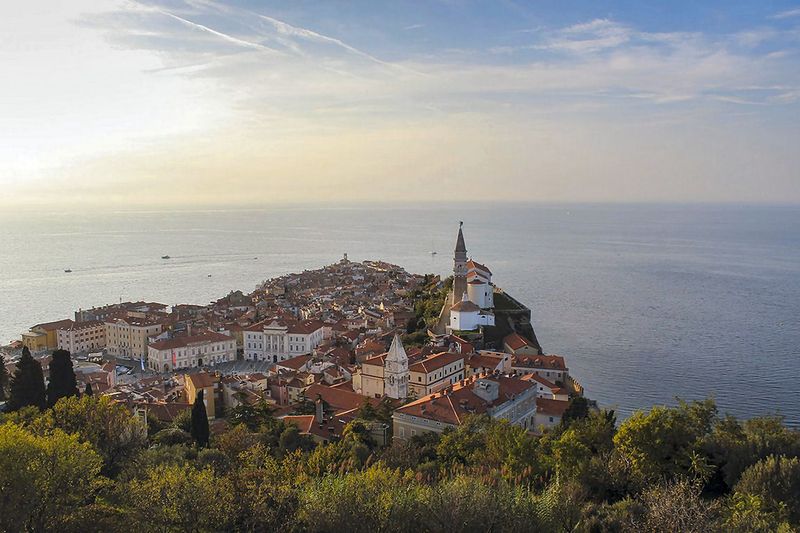
Surrounded on three sides by water, Piran’s old-world beauty is anchored by St. George’s Church, whose bell tower watches over the town like a timeless sentinel.
Tartini Square forms the heart of town, a marble-paved oval surrounded by colorful buildings that once stood at the edge of the harbor before land reclamation. Narrow streets wind uphill from here, revealing charming corners and unexpected sea views at every turn.
Seafood dominates local menus, with restaurants serving the morning’s catch alongside Istrian olive oils and wines. After dinner, join locals for the ritual sunset stroll along the harborfront walls, where the Adriatic creates a different light show each evening.
12. Riga, Latvia

Riga boasts the world’s finest collection of Art Nouveau buildings, with over 700 structures featuring fantastical facades adorned with mythological creatures, flowing plants, and expressive faces. This architectural treasure makes simply walking around a visual feast.
The medieval old town contrasts beautifully with these newer districts. Wander cobblestone streets to discover the House of the Blackheads with its ornate facade, or climb St. Peter’s Church tower for panoramic views of red rooftops and the winding Daugava River.
Riga Central Market occupies five massive zeppelin hangars from WWI, creating Europe’s largest market. Here, locals shop for fresh produce, smoked fish, and pickled vegetables – a perfect place to sample Latvian flavors and observe daily life.
13. Albarracín, Spain (hidden gem)
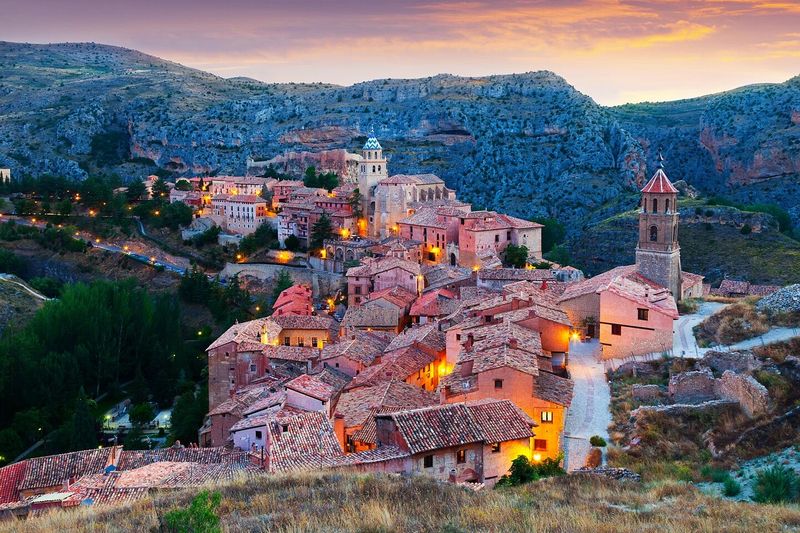
With its harmonious mix of Islamic and Christian architectural styles, Albarracín rises above the river like a timeless sentinel — proudly frozen in its medieval form.
Narrow cobblestone streets wind uphill between ancient houses with wooden balconies and distinctive forge-iron window grilles. The town walls zigzag along impossible-looking ridges, offering spectacular views of the surrounding pine forests and red sandstone mountains.
This remote location in Spain’s least populated province kept Albarracín wonderfully preserved. Modern life exists discreetly behind historic facades, with small family restaurants serving traditional mountain cuisine like zarajos (grilled lamb intestines) and jamón from local black Iberian pigs.
14. Tartu, Estonia

Founded in 1632, Tartu’s prestigious university anchors the city’s vibrant culture, as students infuse its historic streets with ideas, art, and innovation.
The main square features the uniquely tilted Town Hall building and the charming “Kissing Students” fountain – a popular meeting spot. Nearby, Toome Hill park contains university buildings, medieval cathedral ruins, and peaceful walking paths with views over the city.
Tartu’s cultural scene punches above its weight with excellent theaters, galleries, and festivals throughout the year. The Estonian National Museum showcases the country’s remarkable journey through challenging history to become one of Europe’s most digitally advanced societies.
15. Český Krumlov, Czech Republic (hidden gem)

Český Krumlov wraps around a tight bend in the Vltava River, creating a natural moat around its perfectly preserved medieval core. The massive castle complex – second in size only to Prague Castle – dominates the town with its distinctive round tower painted in Renaissance sgraffito patterns.
Wander through a labyrinth of cobblestone streets where Gothic, Renaissance, and Baroque buildings house artists’ workshops, puppet museums, and cozy cafés. The original 18th-century baroque theater still operates with period costumes, scenery, and candle lighting for special performances.
Summer visitors can rent rafts to float the gentle river, offering unique perspectives of the town from below. Winter brings magical Christmas markets and the chance to enjoy hearty Czech cuisine like svíčková (marinated beef) by roaring fireplaces without the summer crowds.
16. Pécs, Hungary

With its sunny climate and relaxed pace, Pécs surprises visitors — almond trees line the streets, and Széchenyi Square buzzes with life in every season.
The stunning Early Christian Necropolis showcases remarkably preserved 4th-century burial chambers with biblical frescoes. This UNESCO site offers a rare glimpse into early Christianity in Europe. Meanwhile, the former mosque of Pasha Qasim stands as Hungary’s largest Turkish monument, now serving as a Catholic church.
Art lovers shouldn’t miss the Zsolnay Quarter, dedicated to the famous local porcelain with its distinctive iridescent glaze. The factory complex now houses museums, studios, and restaurants celebrating this uniquely Hungarian art form.
17. Berat, Albania (hidden gem)

Nicknamed “The City of a Thousand Windows,” Berat impresses with rows of white-framed facades that climb the hill in harmony, reflecting centuries of architectural tradition.
The town divides into three historic neighborhoods: Mangalem (the Muslim quarter), Gorica (the Christian quarter) across the river, and Kala (the castle district) crowning the hill. Inside the castle walls, people still live in original houses dating back centuries, creating a living museum.
Byzantine churches preserve incredible iconography, while Ottoman mosques showcase Islamic architectural details. This religious coexistence has defined Berat for centuries. Don’t miss trying local specialties like fërgesë (pepper and cheese bake) in family-run restaurants with panoramic views.
18. Kaunas, Lithuania

Kaunas thrived as Lithuania’s interwar capital (1919-1940), developing a unique architectural personality that earned it UNESCO recognition. The city embraced modernism during this brief independence period, creating distinctive buildings that blend national identity with international trends.
Freedom Avenue forms the backbone of downtown, leading to the beautiful Old Town where Gothic, Renaissance, and Baroque buildings surround the massive Town Hall known as the “White Swan.” Nearby, the confluence of Lithuania’s two largest rivers creates a peaceful peninsula perfect for sunset strolls.
Street art transforms ordinary walls into powerful statements throughout Kaunas. The famous “Pink Elephant” and other murals reflect the city’s creative energy. Don’t miss the quirky Devil’s Museum with thousands of devil sculptures from around the world!
19. Plovdiv, Bulgaria
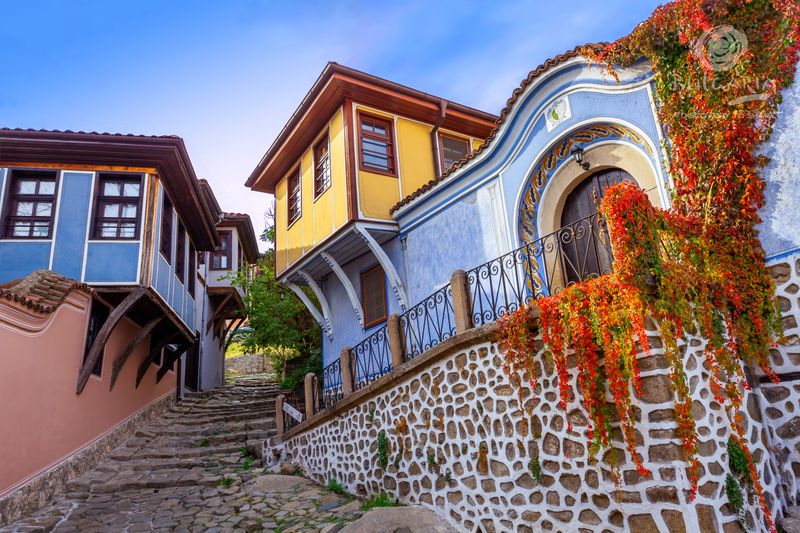
As Europe’s oldest continuously inhabited city, Plovdiv offers a rare blend of ancient and modern — nowhere more evident than at its still-active Roman theater.
The Old Town features colorful National Revival houses with overhanging upper floors and intricate wooden details. Many now house museums, galleries, and guesthouses. Below the cobblestone streets lie Roman ruins, frequently discovered during construction projects.
Kapana (meaning “The Trap”) has transformed from a neglected district to Plovdiv’s creative quarter. This maze of narrow streets now buzzes with independent shops, street art, craft breweries, and innovative restaurants. The neighborhood perfectly represents Bulgaria’s exciting cultural renaissance.
20. Hallstatt, Austria (hidden gem)
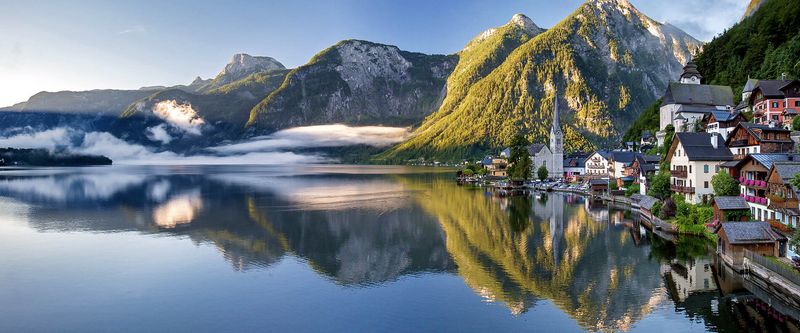
With wooden chalets perched along the steep slopes and reflections dancing on the lake, Hallstatt stuns with scenery that feels almost too perfect to be real.
The town’s history stretches back thousands of years thanks to nearby salt mines that brought early wealth. The Hallstatt Culture (800-400 BCE) was so significant that it named an entire European archaeological period! Today, visitors can tour the ancient mines or visit the fascinating Bone House where painted skulls tell stories of past residents.
Despite its small size, Hallstatt offers remarkable experiences in every season. Summer brings swimming and boating on the crystal-clear lake, while winter transforms the town into a quiet snow globe scene with twinkling lights reflected in dark waters.
